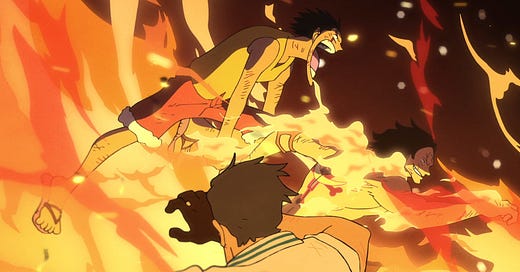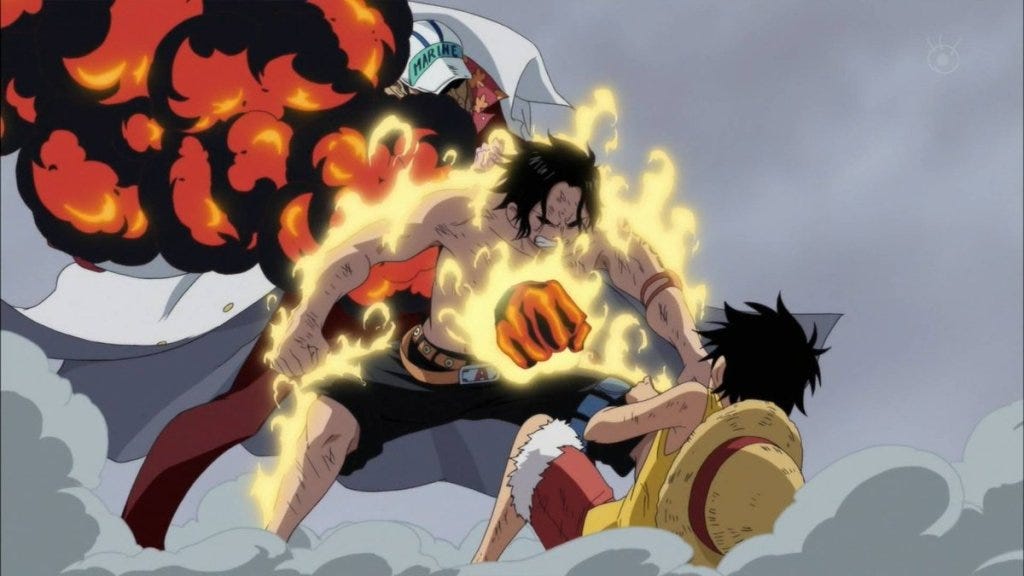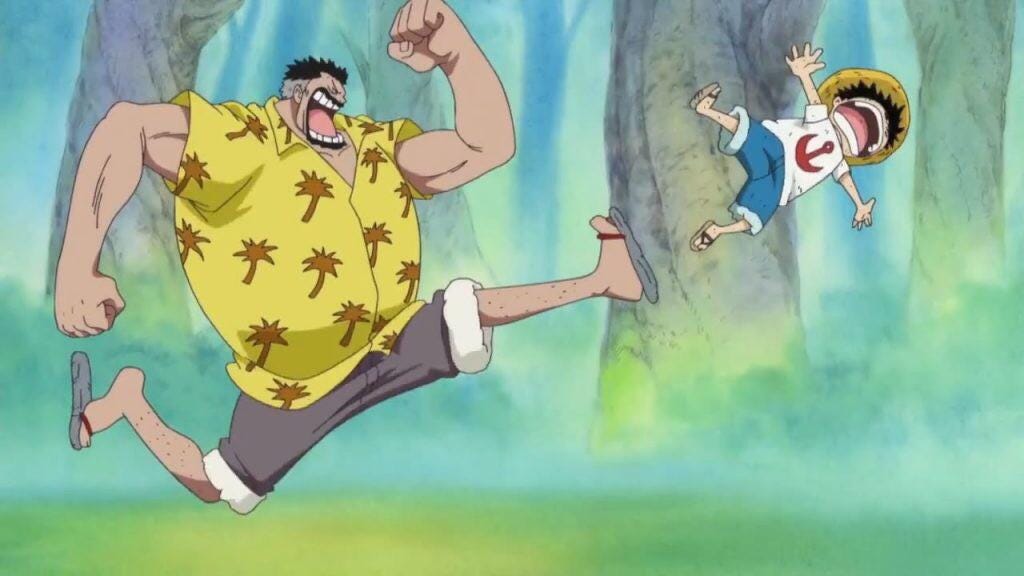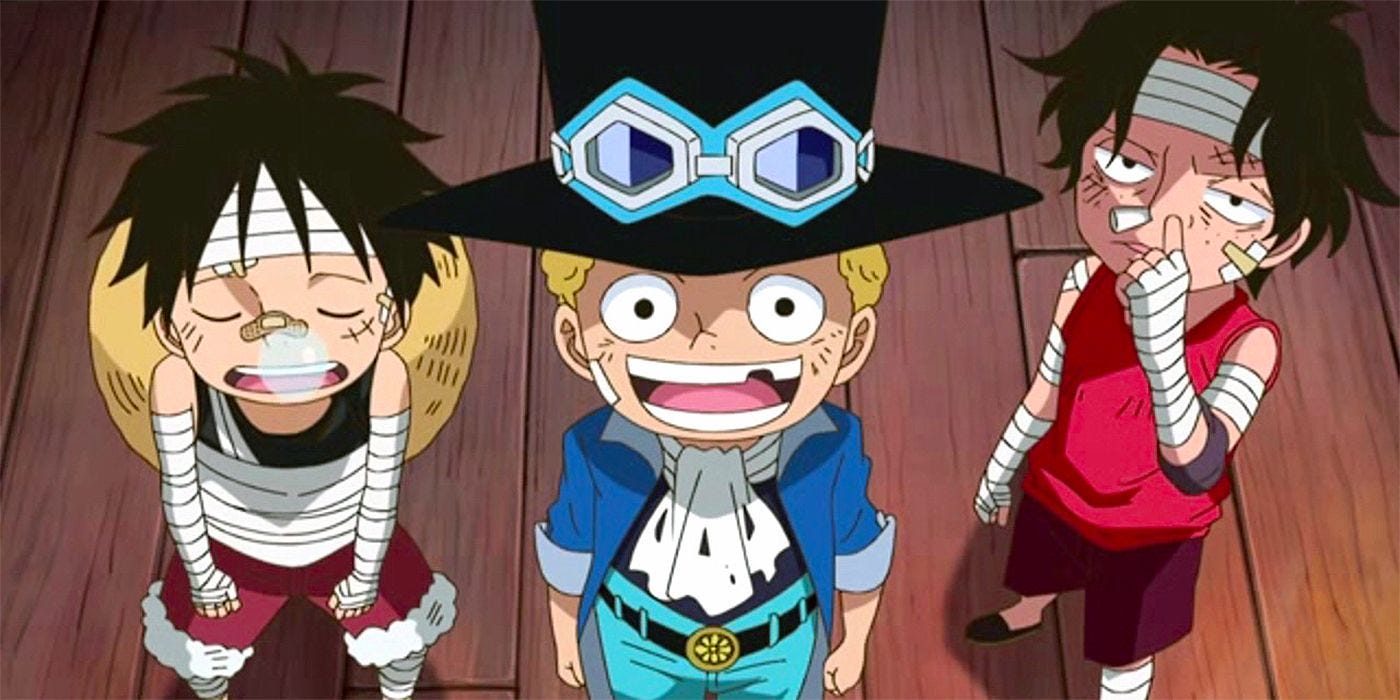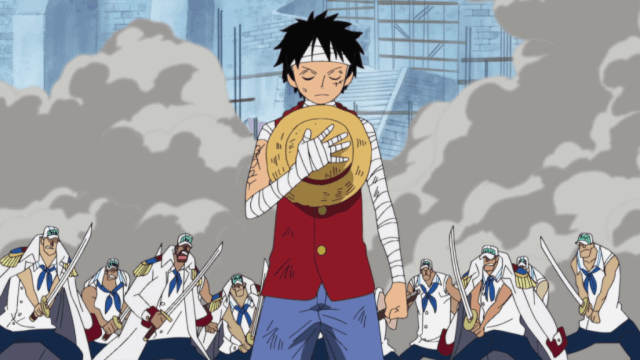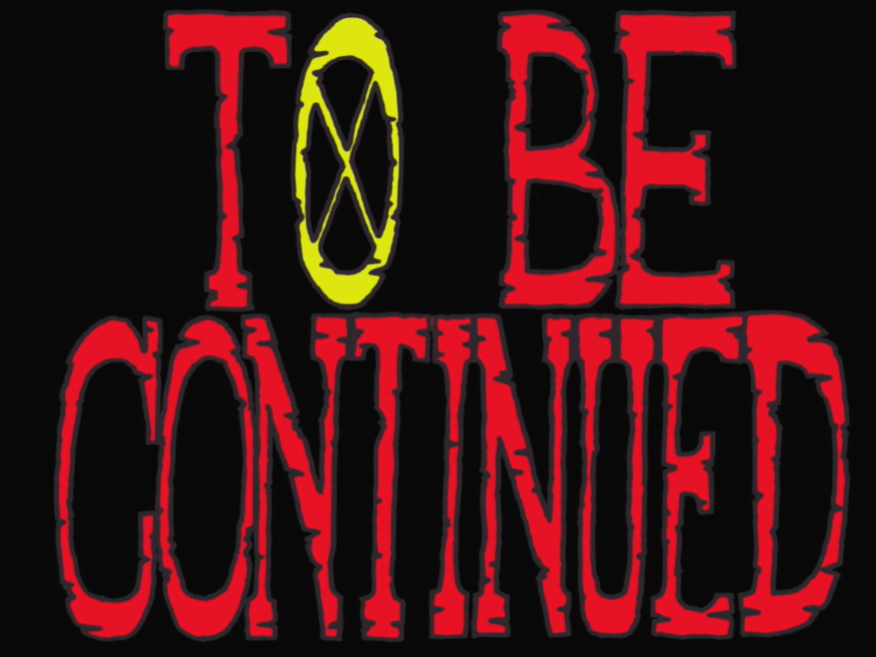One Piece of Advice Series: The Road to 500 and Luffy's Training Arc
One Piece is a lesson in growing in the secret place, then shining bright for all the world to see.
One of my favorite writing choices that the One Piece creator, Eiichiro Oda, makes in his epic story is how we are not introduced to Luffy while he’s in his training arc. It’s a significant change of pace, refreshing even, to see him be strong and proficiently using his Devil Fruit power from the very start. From the pilot, all we see for the first 387 episodes is Luffy just gorging food, having fun, and kicking ass. There’s something very telling about meeting someone midway through their journey; their story has taken a different color by then.
Typically, in Shonen, the training and development storylines are at the beginning of the tale. We journey along with Gon Freecs as he sets off to take the Hunter Exam and become a Hunter within the first ten minutes of the series. Ash Ketchum catches Pikachu, his very first Pokémon, in episode one. I mean, have you met Naruto Uzumaki? But One Piece doesn’t waste time showing us why Monkey D. Luffy is the main character or how he got to be in control of his strange devil power. We simply meet him already strong and standing on business.
And I love it.
Though the anime’s overall pacing is a very slow burn, when Luffy is on the scene or even gearing up for a fight, he hasn’t come to chat. Fights between him and his foes are relatively quick in terms of the time between him finding out the problem and beating the breaks off his opponent. At first, I found that rather peculiar—he looks unassuming, but he’s the protagonist, so it tracks that he wouldn’t be a completely open book; however, the quick pacing of his fights fool you into thinking there is no story behind his strategic thinking and agility in combat mode. He shows up, he fights, he saves the day. That’s it, right? A simple plot formula, right? He’s obtuse and childish most of the time, but his amassing crew trusts him more and more without reserve, and you, as the viewer, quickly learn we don’t doubt Luffy, and that’s just that, right?
Wrong, egghead.
When you watch closely and begin to follow the thread of Luffy’s fight style and limited backstory, you realize that his fighting approach is not a natural gift but a trained acumen. From as far back as his fight with Arlong in Fish-Man District to when he fights Eneru in Spypeia, you’ll notice Luffy is stronger during and smarter after every fight, even when he loses—how to conserve his energy and maximize his output when to strike where least expected or pummel with a barrage of punches. You see this when he first switches to Second Gear at Ennies Lobby. We see what he does in Impel Down and at Marineford. But we never see that boy shooting in the gym like we’re privy to seeing with Roronoa Zoro.
Still, we know he’s about to get down to business from e1 until we arrive at the last six episodes before e500.
This approach to telling Luffy’s story as he voyages toward becoming King of the Pirates makes for effective character exploration. By the time we reach the 500th episode, we are in an arc focused squarely on Luffy and Ace’s origin story as brothers. We have time-traveled a decade in the past to Luffy’s childhood. Now, we are afforded flashbacks into how he became the fearless, jovial, and determined teenage captain we met and have journeyed alongside. The training arc is employed in anime to display the protagonist’s character at the beginning of the shonen trope before the reader or viewer can form a solid opinion of them.
It’s like a vibe check, as if “growing up” with the character makes us understand and appreciate their strength more.
It’s a pull at our pathos with the fictional traumatic origin story we have opted into. But when we see Luffy’s backstory and training arc, we already know he’s relentless, unyielding, powerful, and has an incredible work ethic.
But now we get to learn why.
The Training Arc in Anime is a Fulcrum
This is powerful storytelling. We trust Luffy, care about him, and are loyal to our captain because we’ve seen him in action. We’ve seen him at Arlong Park, in Arabasta, on Jaya, at Thriller Bark (!!!), at Sabaody Archipelago (!!!!), at Impel Down (!!!!!!), and in a way, that makes you appreciate how much he’s grown. Even with the sparse knowledge of his childhood we have before e495, we only see a tenacious and playful youth. We could assume he’s experienced Trauma (who hasn’t, especially in Shonen?), but we don’t know the context of his non-traditional upbringing.
But damn, do we find out.
After Luffy suffers the most traumatic shock of his life, we’re taken back in time. We see him fumble over himself and lack any control of his Gum-Gum powers. We watch him cry as he fears for his life. We watch him be saved, creative, and relentless over and over again. We see how Luffy became who he is after we’ve become deeply attached to him, his character, and his dream. We have gotten to know him so intimately for so long that now our interest in his childhood is piqued and is only deepened by our awareness of his profound grief over losing his brother. We’ve become more and more curious about where this peculiar boy donning his mentor Shank’s red-lined straw hat, with no mention of a mother, no consideration of a father, yet is sporadically raised under the abusive, absentee, and militant care of his grandfather, Monkey D. Garp.
He is not the son of his idol. He is the son of an enigmatic revolutionary who travels around the world, liberating diverse groups of oppressed people, making equal share friends and enemies in the process came from. All we can tell until The Brothers Arc is that whatever dirt and soil formed and molded this resilient kid could only produce such a diamond as Monkey D. Luffy once in a million lifetimes. Except for Ace, anyone else would have crumbled under all that abandonment, abuse, neglect, and pressure.
However, Luffy never talks about his childhood traumas, but by the time episode 500 arrives, it’s very evident why his sense of loyalty and friendship is a deep core value. His relationship with his friends, Ace and Sabo, form his chosen family, bonded by abandonment and survival, much like how he forms his pirate crew.
Although we’re not carefree pirates with troubled pasts like Luffy and Ace, many of us look nothing like the traumas we have experienced.
Be glad for that.
Somehow, we have found ways of processing—or compartmentalizing—our pain. Sometimes, it leads us to be braver than we thought possible; other times, it serves as a mask concealing just how afraid we’ve been in the past and what it took to perform at our current level. When people see us at our mountaintop or while we’re sailing across the Grand Line, making a name for ourselves, it’s easy for them to assume that we’ve never had to struggle to get here or that we don’t know how difficult life can be for someone who is still training and striving.
One Piece of Advice
This is why it’s important to show people who we are. Yes, this is why vulnerability is an important strength to cultivate and practice in our relationships. Because everyone cannot and will not be present during our training arcs, and all they will see is the product of the preparation. That pedestal can leave the wrong impression on those who admire us and those who envy us. Be careful not to conceal too much of your journey; be sure to share how you struggled and managed to figure it out along the way.
Because before you know it, three days will turn into two years, and no one will be any wiser about what you’ve gone through in secret. I pray that you, like Luffy, find the people worthy of sharing your story and that your pain and progress don’t have to remain buried beneath your strength and truth.
Now for the next 500 episodes…

